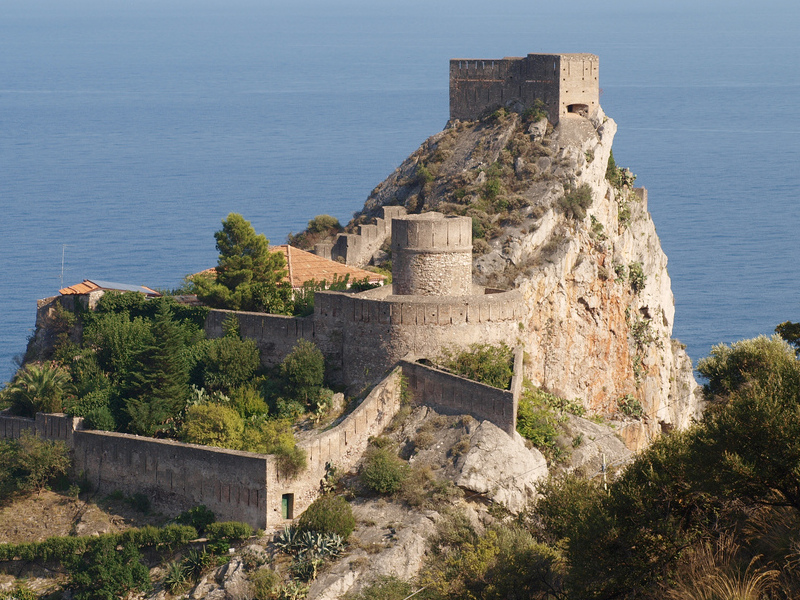
Castello di Sant'Alessio Siculo
Il Castello di Sant'Alessio Siculo sorge sul promontorio roccioso noto come "Capo Sant'Alessio". Costruito dall’imperatore bizantino Alessio I (1048-1118), successivamente appartenne agli Arabi che a loro volta lo cedettero ai Normanni, che apportarono sostanziali modifiche alla struttura originaria. Il Castello, con la Torre di Guardia, si ergono sulle due estremità del promontorio e si compone di due Torrioni, uno a pianta rettangolare ed uno a pianta circolare, e di un muro di cinta. Il Torrione circolare è posto sul picco lato monte, mentre quello a base rettangolare sul picco lato mare.
Nel 1676, durante la contesa fra gli Spagnoli ed i Francesi il Castello divenne il deposito viveri della città di Messina. Nei primi anni dell’Ottocento, gli Inglesi ristrutturarono la fortezza e la rafforzarono con la costruzione di una cinta muraria esterna, allo scopo di difendere la costa dagli attacchi dei Francesi. Nel 1900 il castello divenne proprietà di Giovanni Impellizzeri. Attualmente gli edifici che compongono la fortificazione sono chiusi al pubblico ma lo spettacolo che offre la rocca turrita a picco sullo Ionio resta tra i più belli di Sicilia.
(English)
Castle of Sant'Alessio Siculo
The Castle of Sant'Alessio Siculo stands on the rocky promontory known as "Capo Sant'Alessio". Built by the Byzantine emperor Alexis I (1048-1118), it later belonged to the Arabs who in turn ceded it to the Normans, who made substantial changes to the original structure. The Castle, with the Watchtower, stands on the two ends of the promontory and consists of two towers, one with a rectangular plan and one with a circular plan, and a surrounding wall. The circular tower is located on the peak on the mountain side, while the one with a rectangular base on the peak on the sea side peak.
In 1676, during the dispute between the Spanish and the French, the Castle became the food depot of the city of Messina. In the early nineteenth century, the British renovated the fortress and strengthened it with the construction of an external wall, in order to defend the coast from attacks by the French. In 1900 the castle became the property of Giovanni Impellizzeri. Currently the buildings that make up the fortification are closed to the public but the spectacle offered by the turreted fortress overlooking the Ionian Sea remains among the most beautiful in Sicily.